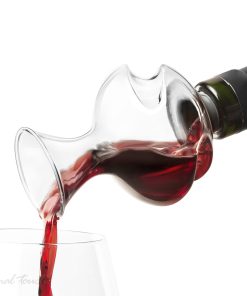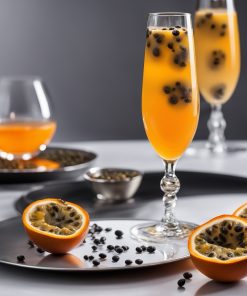Abbeys are credited for the diffusion of beer for both their own use and for the local community living near the abbeys. Most abbeys ceased their brewing activities in the 1950s as there was a decline in the number of new monks joining. Most of these abbeys contracted commercial breweries to produce their beer, sharing the recipes and some of the ingredients, especially the yeast.
Belgium’s abbey ales have gained a worldwide reputation as exceptional beers due to their rich heritage and intricately crafted profiles, boasting a diverse range of flavours and tastes.
In the case of the Ales and Lagers, it is the yeast that makes the difference between them.
Ale yeasts flocculate at the top of the fermentation tank. They generally thrive at temperatures between 60 to 72 degrees Fahrenheit. (15°C to 22°C).
Lager yeasts are more successful at lower temperatures (typically 46 to 55 degrees Fahrenheit, 8 °C to 13°C) and flocculate closer to the bottom of the fermentation tank. Lager yeasts also tend to ferment more aggressively, leaving less residual sweetness and flavour than ales.
The difference doesn’t end with the yeast. The brewing technique for each style is as important as the yeast used. After fermentation, ales are usually aged no more than a few weeks. Lagers are aged for much longer, typically months.
Lager
The comes from the German word “lager,” which translates as “to store”. It refers to the process of keeping the beer at near-freezing temperatures for a few months. Crisp and refreshing with a smooth finish from longer ageing, lagers are the world’s most popular beer.
A lager, which can range from sweet to bitter and pale to black, is usually used to describe bottom-fermented brews of Dutch, German, and Czech styles. Most, however, have a pale to medium color.
Pale ale
Pale ales are those beers that bridge the gap between dark stouts and light lagers.
This style emerged when the brewers in England searched for a method to produce a more consistent and paler beer.
In the past, kilns relied on wood as a fuel source, which posed challenges in managing temperature, frequently leading to barley being excessively roasted or burned. The brewers discovered the ideal result they sought – a clear, amber, or copper-coloured ale – by utilizing coke, a refined coal variant that provides consistent and intense heat when burned.
The traditional British pale ale style, which includes bitter and ESB (extra-special bitter), is a very pleasant and understated beer. It has a malty profile with the American and Australian versions being more intriguing and higher hop presence.
India Pale Ale
In the early 1700s, Britain had a problem: troops and British citizens living in India as part of the colonial rule did not have access to good British ale, and any attempts to ship the malt British ales to them resulted in spoilage. Indian Pale Ale, or IPA, was the solution. The generous amount of hops in this brew protected it from the heat and motion of the British sailing ships of the day.
There was a possibility that IPA would no longer exist once British rule in India ended. But a fateful shipwreck firmly established IPA as its own style rather than a sub-style.
A good IPA will have a pleasantly hoppy aroma, with the American IPAs being more intense and citrus than British versions.
Witbier
Witbier is Dutch for “White Beer,” and Weissbier is German for “White Beer”. Anytime you see “white” in a beer name, it will probably be a Witbier (except –for instance– Chimay White, which is a Triple because of Belgium).
So what is a Witbier? A Witbier is an unfiltered mild ale that uses a herb or spice mixture (called a gruit) to flavour the beer instead of hops. The two common flavouring ingredients in most Wits are coriander and orange (sweet or bitter); they may also include cumin, cardamom, anise, black pepper, or other herbs/spices. It is rare to use hops in the brewing of a Wit, but sometimes a spicy variety such as Saaz could be used.
A Weissbier is similar in style to a Witbier, but the flavour in the Weiss is derived from specialized yeast strains that impart flavours of banana and clove rather than spicing the beer with gruit.
Porter
Porter is an archaic term for dark beer. The origins of the name “porter” remain a mystery in history, although some people favour the tale that it was named after the porters of London, who had a strong liking for it.
In the past, Porter enjoyed immense popularity in both England and America as a favoured beer choice. However, while pale ale has consistently maintained its strong presence, Porter almost completely disappeared in popularity in both the United States and the United Kingdom in more recent times. In the United States, Prohibition dealt a fatal blow to the already declining style, as it did with many other styles in the country. One contributing factor to Britain’s failure can be attributed to a tax imposed on beer.
Due to the wide range of interpretations of modern porter, it is difficult to provide specific tasting notes. The brew has a deep colour that is close to being completely opaque, but if light manages to pass through it, it should appear clear. Typically, the aroma of the nose consists of delicate hints of roasted grains, chocolate, and toffee. Additionally, notes of coffee or liquorice may be present. The texture in the mouth lacks thickness, yet it does not give a watery sensation.
Stout
Stout offers a rich, creamy head; it is flavoured and coloured by barley. Stouts frequently incorporate a proportion of unmalted roasted barley to create a deep, mildly sharp flavour reminiscent of coffee.
In the 19th and 20th Century the stout was regarded as a beer suited for working-class individuals, showcasing a strong masculine appeal through its advertisements featuring muscular arms.
Stouts and porters share many similarities as they both belong to the darker side of the beer spectrum, featuring shades that range from deep brown to black. Additionally, they typically possess a rich, full-bodied quality and offer a smooth, creamy texture. Various flavours, including hints of coffee, roasted barley, burnt grain, chocolate, toffee, toast, and other notes, can be found.
Wheat beer
The original wheat beer, hefeweizen, comes from Bavaria, where its popularity survived when many other German ales were replaced with lagers.
The classic Bavarian style beer consists of a minimum of 50% wheat that has been malted but often has a higher percentage, along with malted barley.
The aroma of bananas and clove is prominently detected in the nose. The taste remains consistent with its banana and clove notes, accompanied by a hint of hop bitterness. The texture is rich and smooth.
Pilsner
Pilsner is a type of beer characterized by its clear and golden appearance and crisp taste.
This beer style stands as the indisputable global favourite, being produced in various locations globally. The key to Pilsner’s success lies in its simplicity.
Pilsner’s popularity stems partly from its versatility in pairing with various foods. The aroma contains notes of hops with hints of graininess. The palate is clean and refreshing.








